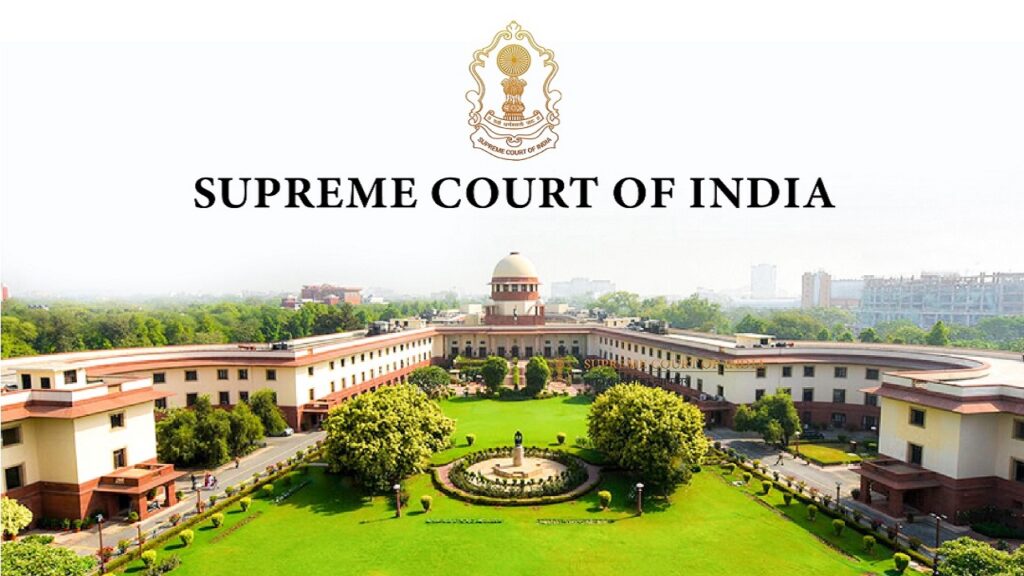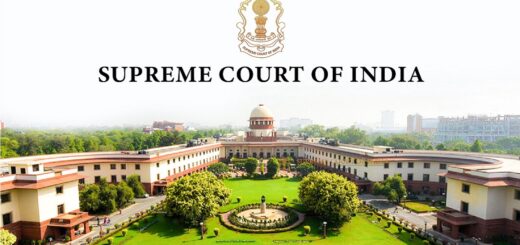The location of arbitration should not be decided by a rigid and unpredictable use of choice of law that relies on vague connections to the main contract, according to the Supreme Court.

The Supreme Court stated that the location of arbitration cannot be decided through a rigid and unpredictable method of choosing laws based on abstract connections to the contract. This decision was made in response to an arbitration petition under Section 11(6)(a) and Section 11(12)(a) of the Arbitration and Conciliation Act, 1996, which requested a referral of disputes and the appointment of an Arbitrator. The three-Judge Bench, including CJI D.Y. Chandrachud, Justice J.B. Pardiwala, and Justice Manoj Misra, noted that the “Closest Connection Test” is no longer a suitable method for determining the seat of arbitration due to the Shashoua Principle. They emphasized that even if the governing law of the contract is clearly stated, it does not imply that the law for the arbitration agreement and the seat of arbitration will be the same.
The Bench further explained that a better way to determine the seat of arbitration is to look for an explicit mention of a location in the arbitration agreement. If a place is designated for arbitration and there are no significant reasons to suggest otherwise, that place should be considered the ‘seat’ of arbitration, even if it is referred to as a ‘venue’ in the agreement.
The petitioner company, M/s Arif Azim Co. Ltd., and the respondent company, M/s Micromax Informatics FZE, signed a Consumer Distributorship Agreement (CDA) in Kabul, Afghanistan. This agreement allowed the petitioner to be the authorized distributor of the respondent’s mobile handsets in Afghanistan, giving them a non-exclusive right to market and sell these products. Several transactions occurred between the two companies. In 2012, the petitioner ordered about 8,000 mobile handsets, but the handsets and invoices were issued by another company, M/s Micromax India, which only delivered 7,300 handsets.
When invoicing, this company did not consider the petitioner’s credit balance and requested payment directly to them in India. Following this, the petitioner communicated multiple times with the respondent’s Executive Director over the next two months, asking for the outstanding credit balance and payment, but received no response. Consequently, the petitioner issued a notice to initiate arbitration. Since the issue arose in both Afghanistan and India, the petitioner preferred to resolve it through arbitration under Indian jurisdiction. After receiving no response to the notice, the petitioner filed a case in the Supreme Court.
The Supreme Court observed that when multiple forums are available, it is up to the court to decide which one is best for all parties involved and for justice. Generally, the party claiming that a forum is inconvenient or unfair must prove it. However, the choice of forum by the other party is not the final word; the court must assess if the current proceedings are inconvenient or unsuitable for the case.
The Court noted that even if Clause 27 of the Distributorship Agreement allows both UAE courts and others to have jurisdiction, the petitioner can still approach the Supreme Court for appointing an arbitrator. However, the Court may choose not to exercise its jurisdiction if a more suitable forum exists. It stated that since the arbitration seat is in Dubai, UAE, and both the governing law and the location of the respondent are in Dubai, it logically follows that Dubai is the more appropriate place for appointing the arbitrator, rather than the courts in India.
The Court reached its conclusion as follows:
- Part I of the Act, 1996 applies only when arbitration occurs in India, meaning either (I) the arbitration seat is in India or (II) the laws governing the arbitration agreement are Indian laws.
- For arbitration agreements made after 06.09.2012 with the seat outside India, Part I of the Act, 1996 does not apply and is outside the jurisdiction of Indian courts.
- Even for agreements made before 06.09.2012, Part I of the Act, 1996 will not apply if the parties have excluded its application by either explicitly stating the seat is outside India or implicitly by choosing a law other than Indian law.
- Once the ‘seat’ is established, it acts like an exclusive jurisdiction clause, meaning only the courts of that seat can oversee the arbitration process.
- The ‘Closest Connection Test’ for determining the seat of arbitration is no longer valid due to the Shashoua Principle, which changes how the seat is identified.
- If an arbitration agreement specifies the curial law of a certain place or a set of international rules, this indicates that the designated place is likely the ‘seat’, as the governing law of the arbitration agreement usually aligns with the curial law.
- Just because the parties have chosen a location without clearly stating a seat, the courts cannot ignore the specific decisions made in the arbitration agreement by assuming these choices were made by mistake regarding the arbitration seat.
- If there are two or more locations mentioned in the arbitration agreement that could serve as the seat, the issue can be resolved using the Doctrine of Forum Non Conveniens. The seat will be chosen based on which location is most suitable, considering the nature of the agreement, the current dispute, the parties involved, and their intentions. The location that best serves the interests of all parties and justice will be identified as the ‘seat’ of arbitration.
The Court ruled that the petition cannot proceed because neither the seat of arbitration is in India nor is the arbitration agreement subject to Indian laws. Therefore, the Apex Court dismissed the petition.








